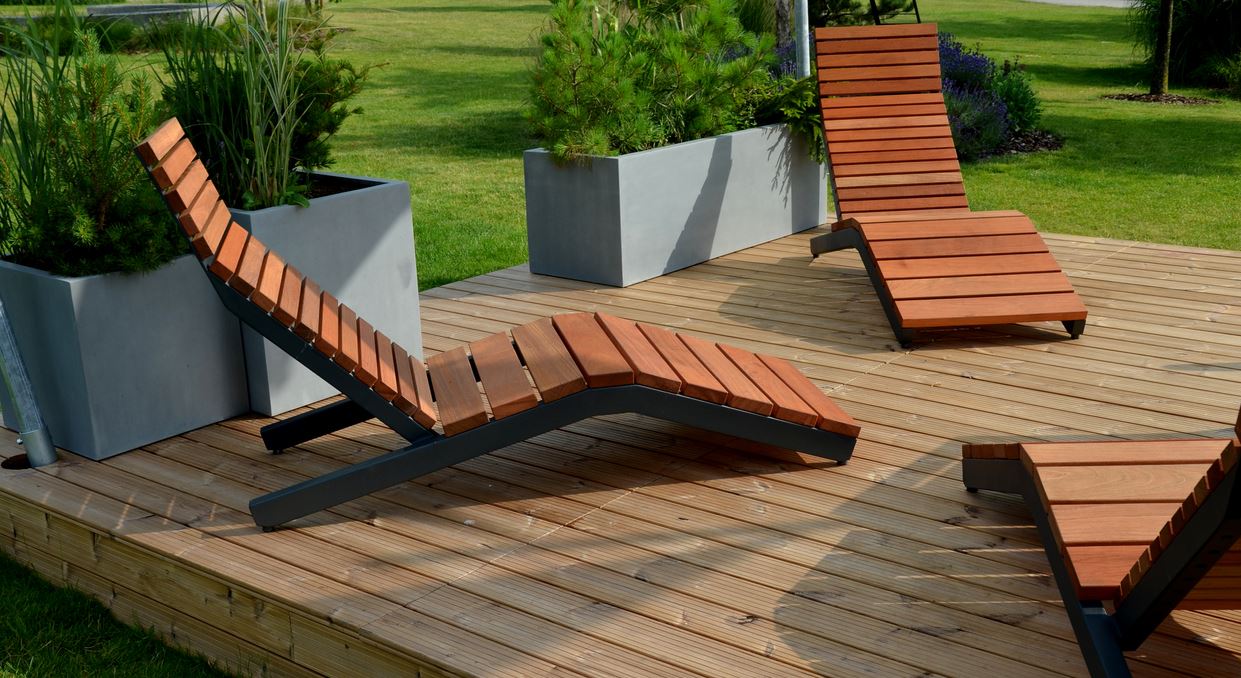Define the dimensions and location of your terrace
First, it is important to determine the dimensions of your future terrace depending on what you want, but also depending on your land and the location you plan to reserve for it. To do this, it is important to try to visualize it once finished and ask yourself a few questions:
- Where will it be easiest to access?
- Where will it start and end?
- What will it be used for and what furniture will be installed on it? If you plan to use it as an extension of your interior to take your meals there, install a barbecue, etc., you must plan it large enough to accommodate all the necessary furniture.
- Will it be on one level or should a step be provided?
- In which direction is it best to lay the planks?
The answers to these questions will help you assess the size of your deck, which will be helpful in purchasing the necessary materials.
Do not hesitate to draw plans, even if they are rough.
Prepare the terrain
Before you can build your wooden deck, it will be necessary to prepare the location. This means that you must do the following:
- Level the ground and remove any stones that may affect the flatness of the ground. For ease of installation, it is greatly preferred that your floor be perfectly packed. If it has just been laid down, you run the risk of your patio deteriorating quickly, as the ground will shift and settle under its weight. In this case, it is advisable to wait at least one year or to plan an installation on concrete foundations or stringers.
- Provide a 1% slope to ensure the flow of rainwater.
- Install a drainage system to guarantee the longevity of your terrace by protecting against moisture. This system can be installed under the terrace or around it. These are usually perforated pipes laid over a geotextile liner and then covered with gravel. Always with the same objective, it will be important, when installing, to remember to keep a space between each row of boards. These spaces will promote the flow of water and prevent it from stagnating on your terrace.

Determine what will be the load-bearing structure of your terrace
To install a terrace on beaten earth, several installation solutions are available to you. The choice is often imposed by the configuration of the ground.
Installation on a geotextile
On perfectly flat ground that has been compacted for a long time, it is possible to install your terrace directly on a geotextile film. This coating prevents the regrowth of grass under your terrace.
Laying on adjustable pedestals
It is possible to install your terrace on adjustable pedestals. At present, this solution is widely used due to its speed and ease of installation.
In addition, the pedestals adapt to any type of surface as long as it is flat and stabilized, even if it is not perfectly level. Indeed, the studs being adjustable, they allow make up for slight irregularities of land while maintaining a 1% slope. All you have to do is screw them on or unscrew them.
These pedestals can be installed on a geotextile film, on gravel, on sand or directly on the lawn. The point to remember is that they must be placed at an equal distance in order to distribute the weight of the terrace.
Laying on concrete blocks
On stabilized ground, an alternative to pedestals is the use of concrete blocks. The principle stays the same. The joists are thus placed on them, which prevents them from being directly on the ground. You can also opt for concrete slabs or studs instead of breeze blocks.
When using this type of support, it is recommended to provide a bed of crushed sand on the geotextile. It will compensate for any irregularities in the terrain.
Laying on stringers
Finally, a last option consists of casting stringers that will accommodate the joists of your terrace. The stringers are concrete footings 15-20 cm wide and 20-30 cm deep.
This solution requires more work since you will have to dig your ground for each sill. They must then be poured over the entire length of your future terrace, taking care to respect a regular spacing between each of them. In addition to the work, the stringers require more material, because you will have to make concrete. Concrete studs replace them advantageously for a similar result.
Realization of your terrace
Once all these steps have been completed, you can move on to building your terrace itself. To do this, follow these steps:
- Install the joists on the supports of your choice, remembering that they must be placed perpendicular to the boards of your terrace.
- Once the joists are in place, you can finally start laying the slats by fixing them in the joists with screws. Be careful to respect the spacing recommended by the manufacturer to allow good support and avoid any inconvenience in the future.
- Before installing your furniture and starting to enjoy your terrace, it is essential to protect it with a protective oil or varnish, depending on the wood you have selected for its construction.

